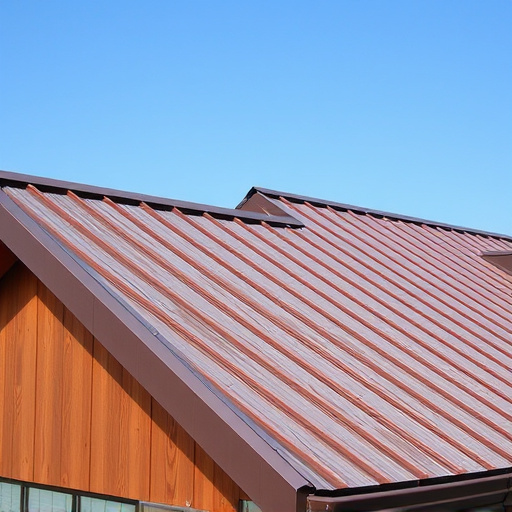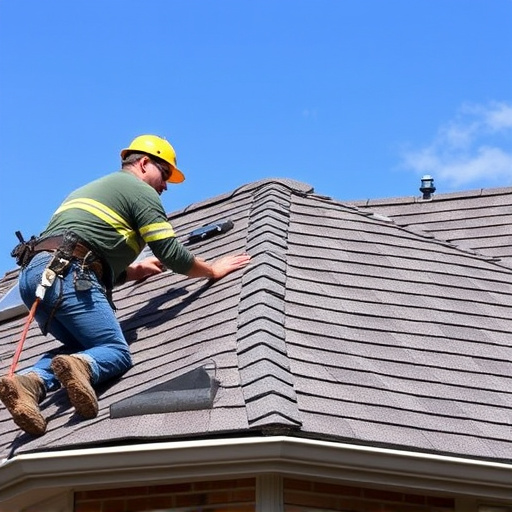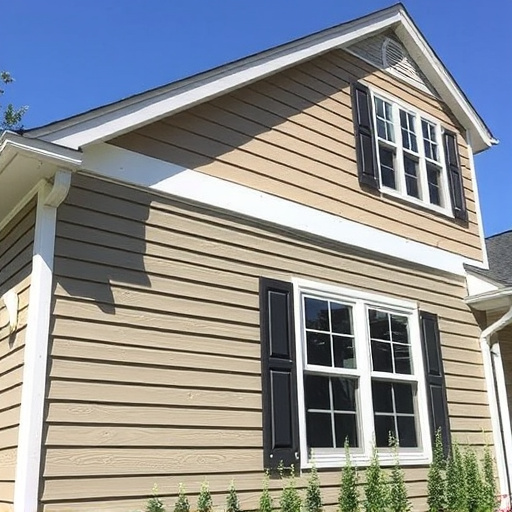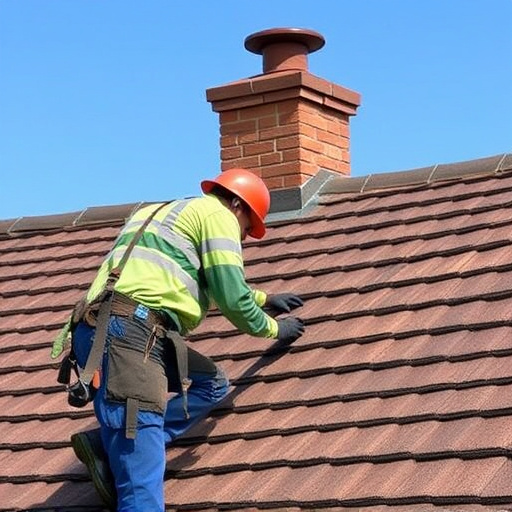Spring’s Signal: The Best Time for Roof Maintenance Checks
Springtime presents an optimal window for homeowners to address roof maintenance, leveraging mild te…….
Roof maintenance is an often-overlooked yet critical aspect of property care, playing a pivotal role in ensuring the longevity and integrity of buildings worldwide. This article aims to delve into the intricate world of roof maintenance, exploring its various facets, benefits, and the global impact it has on construction, economics, technology, policy, and more. By understanding the importance and processes involved, homeowners, property managers, and industry professionals can make informed decisions, ensuring their roofs remain in optimal condition for years to come.
Definition: Roof maintenance refers to a systematic approach to inspecting, repairing, replacing, and upgrading roof systems to maintain their structural integrity, water-tightness, and energy efficiency over time. It involves both routine care and specialized interventions.
Core Components:
Regular Inspection: Periodic visual examinations of the roof are crucial to identify potential issues like missing or damaged shingles, flashing problems, moisture intrusion, or signs of aging.
Repairs and Maintenance: Addressing minor defects early prevents them from becoming major problems. This includes sealing leaks, repairing or replacing loose or damaged materials, and maintaining drainage systems.
Replacement and Upgrades: Over time, roofs require replacement due to age, severe weather events, or technological advancements. Modern roofing options offer improved durability, energy efficiency, and aesthetic appeal.
Historical Context:
Roof maintenance has evolved significantly over centuries, mirroring technological progress and changing building codes. From thatch roofs in ancient times to modern asphalt shingles, the materials and methods have diversified. Today’s advanced roof systems incorporate high-tech materials, better insulation, and water-resistant membranes, ensuring improved performance and longer lifespans.
Roof maintenance practices vary across regions, influenced by climate, cultural preferences, and local building codes. Here’s a glimpse into some global trends:
North America: Known for its diverse weather patterns, the region emphasizes robust roof systems with strong wind resistance and snow loading capabilities. Energy-efficient roofing is also popular due to favorable incentives and growing environmental awareness.
Europe: With a focus on historic preservation and architectural diversity, European roofs showcase a range of styles, from traditional tile roofs to modern flat roofs. The continent leads in green roofing and solar panel integration for energy efficiency.
Asia: Rapid urbanization has led to innovative roof solutions in Asia, including lightweight roofing materials and high-rise building designs. The region also prioritizes fire-resistant roofing due to strict safety regulations.
Latin America: Here, clay tile roofs are prevalent due to their durability and traditional charm. In recent years, metal roofing has gained popularity for its longevity and low maintenance requirements.
These regional variations highlight the dynamic nature of roof maintenance, where local conditions and cultural influences shape best practices.
The global roof maintenance market is substantial and growing, driven by factors such as:
| Factor | Impact |
|---|---|
| Aging Infrastructure | Many buildings worldwide are reaching their peak roof replacement age, creating a demand for maintenance and repair services. |
| Urbanization | Rapid city development in emerging markets increases the need for roofing solutions, both for new constructions and renovations. |
| Environmental Awareness | Growing concerns about sustainability drive the adoption of eco-friendly and energy-efficient roofing materials. |
| Technological Advancements | Innovations in roof manufacturing and installation techniques lower costs and improve performance, making quality roofs more accessible. |
Market Dynamics:
Investment Patterns:
Technological innovations have significantly enhanced roof maintenance practices:
Advanced Roofing Materials: Newer materials like high-performance polymers, copper alloys, and smart tiles offer improved durability, corrosion resistance, and self-cleaning properties.
Drone Technology: Drones equipped with high-resolution cameras and sensors enable efficient and safe inspections of hard-to-reach areas, reducing the risk to roofers and providing detailed imagery for analysis.
Building Information Modeling (BIM): BIM software creates digital models of buildings, including roofs, aiding in design, construction, and maintenance planning. It improves collaboration among stakeholders and facilitates informed decision-making.
Smart Home Integration: Integrated roofing systems with sensors can monitor roof health, detect leaks early, and even adjust ventilation to optimize energy efficiency.
These advancements contribute to more efficient, effective, and sustainable roof maintenance practices.
Government policies and regulations play a crucial role in shaping the roof maintenance industry:
Building Codes: Local building codes dictate minimum standards for roofing materials, construction methods, and safety measures. Compliance ensures structural integrity and fire resistance.
Energy Efficiency Standards: Many countries have implemented regulations promoting energy-efficient roofing to reduce carbon footprints and lower heating/cooling costs.
Warranty and Insurance Policies: Manufacturers often offer warranties on their products, providing protection against defects. Homeowners’ insurance policies may cover roof damage caused by natural disasters or vandalism.
Subsidies and Tax Incentives: Governments encourage the adoption of green roofing practices by offering financial incentives for installing energy-efficient or sustainable roofs.
Despite its numerous benefits, roof maintenance faces several challenges:
Cost Considerations: Initial investment in quality roofs can be high, making it a significant expense for homeowners and developers. However, long-term savings through reduced maintenance costs offset these initial costs.
Accessibility: Rooftops can be hazardous to access, especially for large or irregularly shaped areas. Ensuring safe inspection and repair practices is essential, leading to increased labor costs.
Lack of Awareness: Many property owners underestimate the importance of regular roof maintenance, leading to deferred repairs and more extensive issues later. Educating homeowners about the benefits is crucial.
Proposed Solutions:
Case 1: Green Roof Revolution in Toronto, Canada:
The city of Toronto introduced a comprehensive green roof program, incentivizing building owners to install energy-efficient roofing systems. The initiative aimed to reduce urban heat islands and lower energy consumption. As a result, the program led to the installation of over 200 green roofs, significantly improving the city’s overall sustainability profile.
Case 2: Disaster Recovery and Roof Replacement in Florida:
After a series of severe hurricanes in Florida, the state implemented a rapid roof replacement program for affected homeowners. The initiative streamlined the process, providing financial assistance and ensuring residents had access to high-quality, storm-resistant roofing materials within months of the disasters.
Case 3: Smart Roofing Technology in Singapore:
Singapore’s government encouraged developers to adopt smart roofing technologies as part of its Smart Nation initiative. As a result, many new buildings now feature integrated roof systems that monitor and optimize energy usage, reducing overall building energy consumption.
The future of roof maintenance is poised for growth and innovation:
Sustainable Roofing: Environmental concerns will drive the development of eco-friendly materials, including biodegradable options and recycled content roofs.
Digital Integration: Advanced drone technology, AI-powered predictive analytics, and IoT devices will further revolutionize inspections and maintenance planning.
Off-Grid Roof Systems: With a focus on energy independence, off-grid roofing solutions that incorporate solar panels and battery storage systems will gain popularity.
Customized Roofing Solutions: 3D printing technology may enable the creation of unique, customized roof designs tailored to specific architectural styles and climatic conditions.
Roof maintenance is a cornerstone of responsible property management, ensuring buildings provide safe, comfortable, and energy-efficient spaces for occupants. As the global construction industry continues to evolve, embracing technological advancements and adhering to regulatory frameworks will be essential. By prioritizing roof maintenance, we not only protect our investments but also contribute to sustainable, resilient communities worldwide.
Q: How often should I have my roof inspected?
A: It’s recommended to inspect your roof at least once a year, especially in regions with extreme weather conditions. Regular inspections help identify minor issues early, preventing them from becoming costly repairs.
Q: What signs indicate that my roof needs repair or replacement?
A: Look out for missing or damaged shingles, leaks, mold or mildew growth, visible damage to the structure, and increased energy bills. These could be indicators of a troubled roof.
Q: Are there tax benefits for replacing my roof with energy-efficient options?
A: Yes, many countries offer tax credits, deductions, or incentives for installing energy-efficient roofing materials. Check local building codes and consult a tax professional for specific details.
Q: How can I choose the best roofing material for my home?
A: Consider factors like climate, budget, energy efficiency, maintenance requirements, and aesthetic preferences. Consult with professionals who can provide expert advice based on your region and specific needs.
Q: Can I perform roof repairs myself, or should I hire professionals?
A: Simple repairs like replacing missing shingles or sealing leaks might be DIY projects. However, complex repairs or replacements often require professional skills, tools, and knowledge, ensuring a safe and durable outcome.

Springtime presents an optimal window for homeowners to address roof maintenance, leveraging mild te…….

Regular roof inspections (roof maintenance) are key for homeowners to preserve robust roofs and sidi…….

Regular roof maintenance, through monthly inspections and preventative measures like gutter cleaning…….

Roof wear is accelerated by environmental factors, necessitating regular inspections for early issue…….